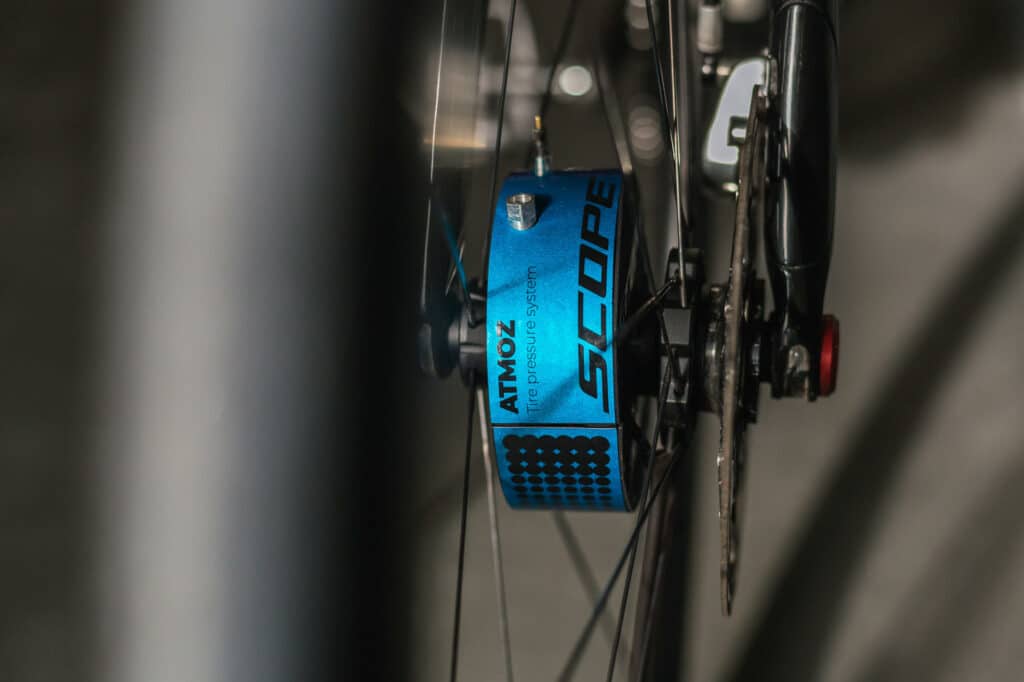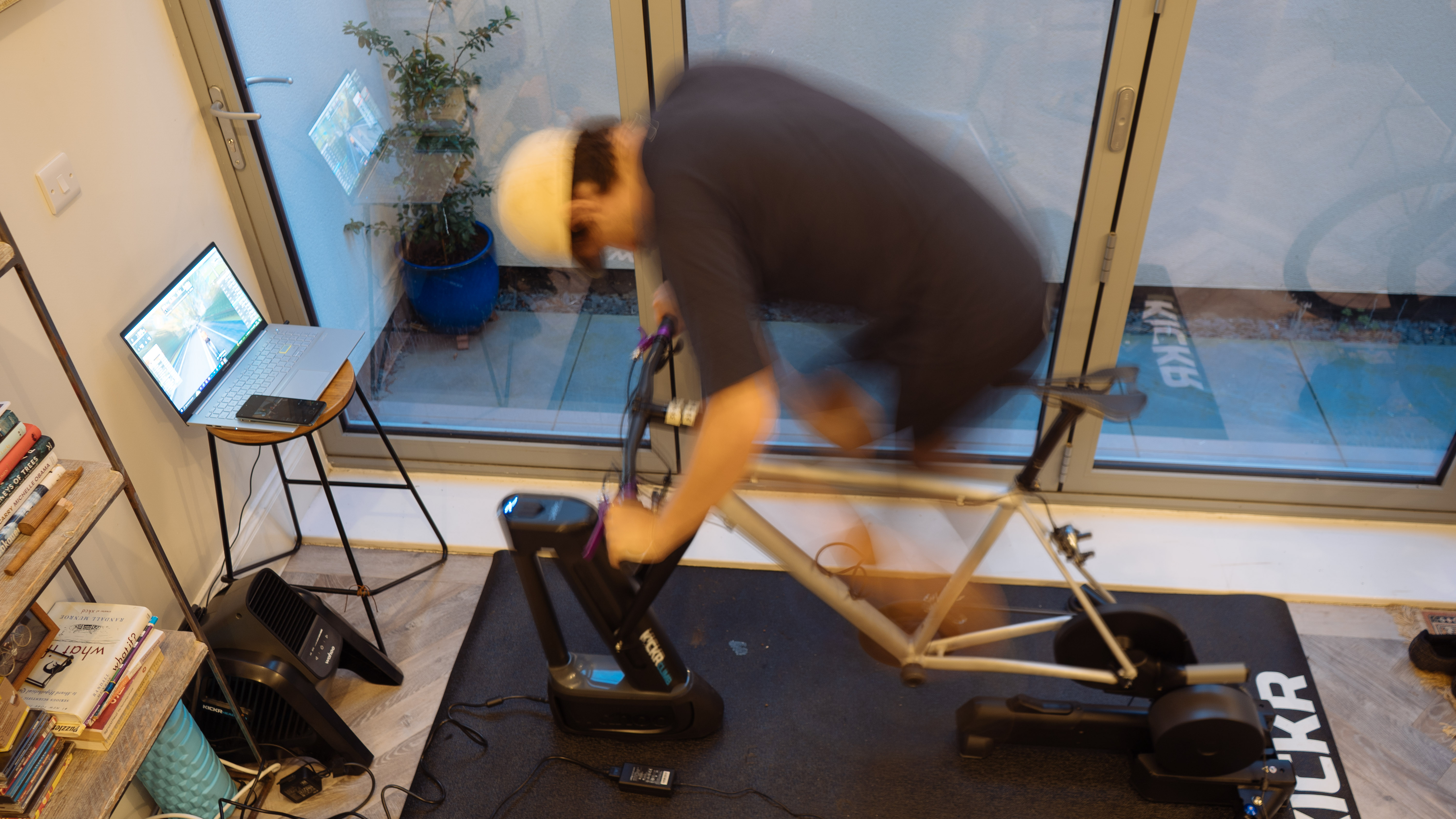Team DSM's self-inflating tyre system is still an 'ongoing project'
It's unlikely we'll see the innovative Scope Atmoz system at this year's Paris Roubaix

Team DSM has confirmed the Scope Atmoz self-inflating tyre system is still very much in the team's plans, but despite initially aiming to get the product ready for the 2022 Paris-Roubaix and later the Tour de France, there's no timeline or deadline for when it'll be introduced into races.
The team's partnership with Dutch wheel manufacturer, Scope, was unveiled in April 2022, when the brand's innovative Atmoz system was officially authorised by the UCI for use in its sanctioned races.
Priced at a whopping €3,000, the company developed the technology in collaboration with Team DSM to allow riders to adjust their tyre pressure while in motion, both inflating and deflating the tyres using buttons on the handlebar, allowing riders to tailor their tyre pressure to the current terrain. It uses a reservoir of pressurised air at the hub, with a mechanical valve that regulates pressure between that and the tubeless tyre at the rim.
Team DSM originally claimed its riders would use the technology at the then-upcoming Paris-Roubaix, before a quick u-turn that marked the cobbled stage 5 of the 2022 Tour de France as the next target for its maiden voyage. That target was missed, and the team showed up at the stage with their standard setup comprising Shimano Dura-Ace wheels.
Despite the setbacks, Team DSM remains committed to the idea and is continuing to develop a working system.
"Our expert guy is here," Phil West, Team DSM's coach, told Cyclingnews at the start of Omloop Het Nieuwsblad. "I think it's just a project we're going to continue working on."
Confirming that their bikes for Opening Weekend were just "our standard setup," it's clear the system is still not ready for racing, and it won't make a public appearance until the team is 100% confident that it is, but West and his Team DSM colleagues remain excited by its potential. "I think when everything's aligned, with all the functioning parts, then, for sure, it's something we'd like to use. It would have been a great advantage to use it last year, but it's one of those things, whenever you try and bring a new piece of equipment into this field, you just want to be confident that you tried it and given it enough opportunities so that it works."
The latest race content, interviews, features, reviews and expert buying guides, direct to your inbox!
Scope claims its system can be worth 20-30 watts of rolling resistance gains. This means more of a rider's energy would be converted to forward motion, and 20-30 watts is significant in the 'marginal gains' era where riders will chase one or two.
Rolling resistance is defined as "the force resisting the motion when a body rolls on a surface." In this case, the 'body' is the tyre, and the resistance is provided by friction and imperfections in the road surface. Typically, lower tyre pressures mean the tyre can deform over these imperfections more easily, but there's often a balance to be struck with added friction.
Therefore, the optimal tyre pressure depends on the surface; higher pressures work better on smooth roads, and lower pressures are faster on rough roads. In cobbled races, where the road surface frequently changes between smooth roads and rough cobbles, riders are often forced to find an optimal balance between the two. By being able to adjust the pressure on the fly, riders would theoretically be able to have the best of both, and that's what Team DSM is chasing for its Classics specialists like John Dekenkolb.
Exactly when it will make its debut, however, remains unknown on two fronts. Firstly, there's actually getting the product to a finished and functioning state that can handle the stresses of a 200-plus kilometre cobbled race. Exactly how far they are along that process they are, West didn't divulge, but just as important in his mind is giving riders the opportunity to familiarize themselves with it. With the cognitive demands of racing, it needs to be second nature.
"It's really more about the riders having the chance to use it and understand and know how to work it without being something they have to think about constantly."
Cyclingnews will have reporters on the ground at all of the Classics Monuments and various other Spring Classics, so we'll be sure to keep our eyes peeled and our ears open.

Josh is Associate Editor of Cyclingnews – leading our content on the best bikes, kit and the latest breaking tech stories from the pro peloton. He has been with us since the summer of 2019 and throughout that time he's covered everything from buyer's guides and deals to the latest tech news and reviews.
On the bike, Josh has been riding and racing for over 15 years. He started out racing cross country in his teens back when 26-inch wheels and triple chainsets were still mainstream, but he found favour in road racing in his early 20s, racing at a local and national level for Somerset-based Team Tor 2000. These days he rides indoors for convenience and fitness, and outdoors for fun on road, gravel, 'cross and cross-country bikes, the latter usually with his two dogs in tow.
